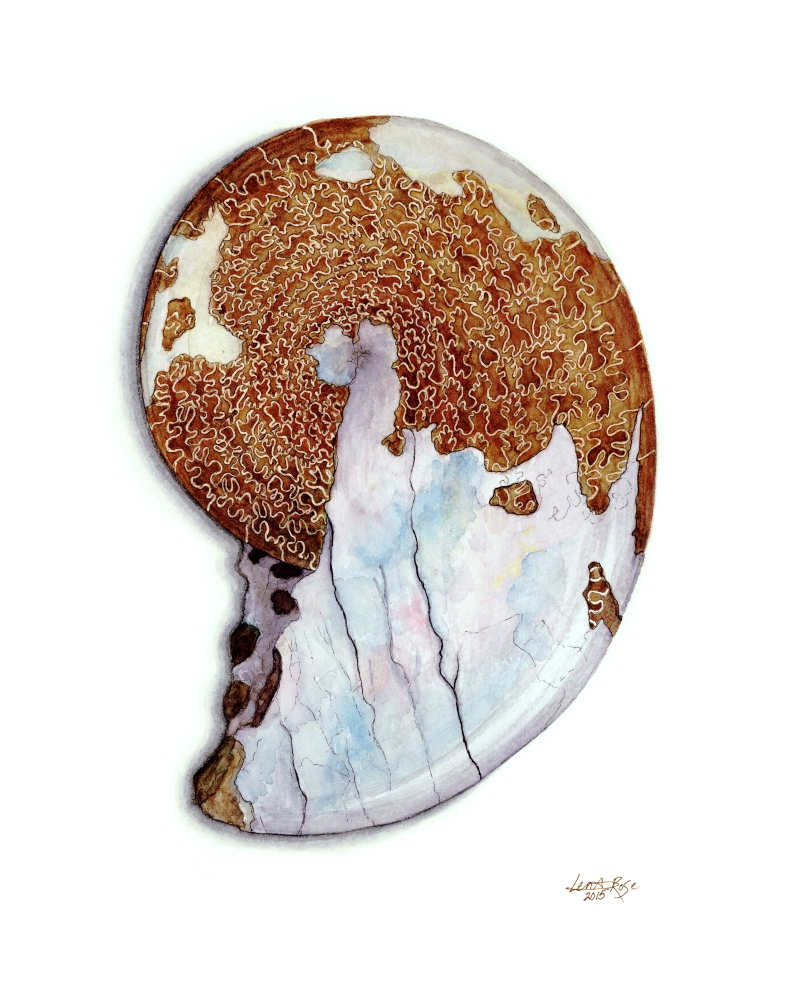I’ve started to get back into working with watercolors over the last few months, and this is one of my favorites so far: an ammonite done in watercolor over pen and ink. This particular specimen is a fossil Sphenodiscus lenticularis, an extinct species from the Late Cretaceous of North and Central America.
Ammonites are a subclass of molluscs, meaning they are related to shelled animals like gastropods (snails) and bivalves (clams, scallops, oysters, etc.). More specifically, they are members of Class Cephalopoda, which includes octopuses, squid, and cuttlefish. Ammonites first appeared in the Devonian (~420 million years ago) and went extinct during the Cretaceous-Tertiary mass extinction (~66 million years ago), the same extinction event that killed the non-avian dinosaurs.
Ammonite shells were divided into chambers by structures called septa. Where the septa meet the walls of the shell, intricate folds and lobes create wavy lines called sutures, like the ones seen on this specimen. Suture patterns in ammonites can range from relatively simple zig-zag goniatitic sutures, to more complex ceratitic patterns, to highly complex ammonitic sutures. The suture patterns in Sphenodiscus lenticularis are an example of ammonitc sutures, which are visible where the outer shell has been worn away.
Through the history of the Ammonoidea, the dominant evolutionary trend that is observed is an increase in the number and complexity of septal folds. Why the increase in complex suture patterns? Possibilities include functions related to buoyancy, calcification, or improved attachment of the organism to its shell, but the first hypothesis was proposed by William Buckland in 1836. He believed that the complex folds provided additional strength to resist hydrostatic pressure of deep water, similar to corrugated cardboard (although, incidentally, corrugated cardboard wasn’t invented until 1856). This hypothesis would also suggest that the increase in ammonite sutural complexity over time was matched by a transition from shallow to deeper water, although this trend isn’t actually supported by the fossil record. Stuture patterns in ammonites have been studied for many decades, but recent research suggests the increased surface area of complex septal folds is primarily important for increasing the strength of the connection between the body and the shell of the organism.
Leewy, Z. 2002. The function of the ammonite fluted septal margins. Journal of Paleontology, 76: 63-69.
Buckland, W. 1836. Geology and mineralogy considered with reference
to natural theology. William Pickering, London, volume 1, 599 p.; volume
2, 128 p.
